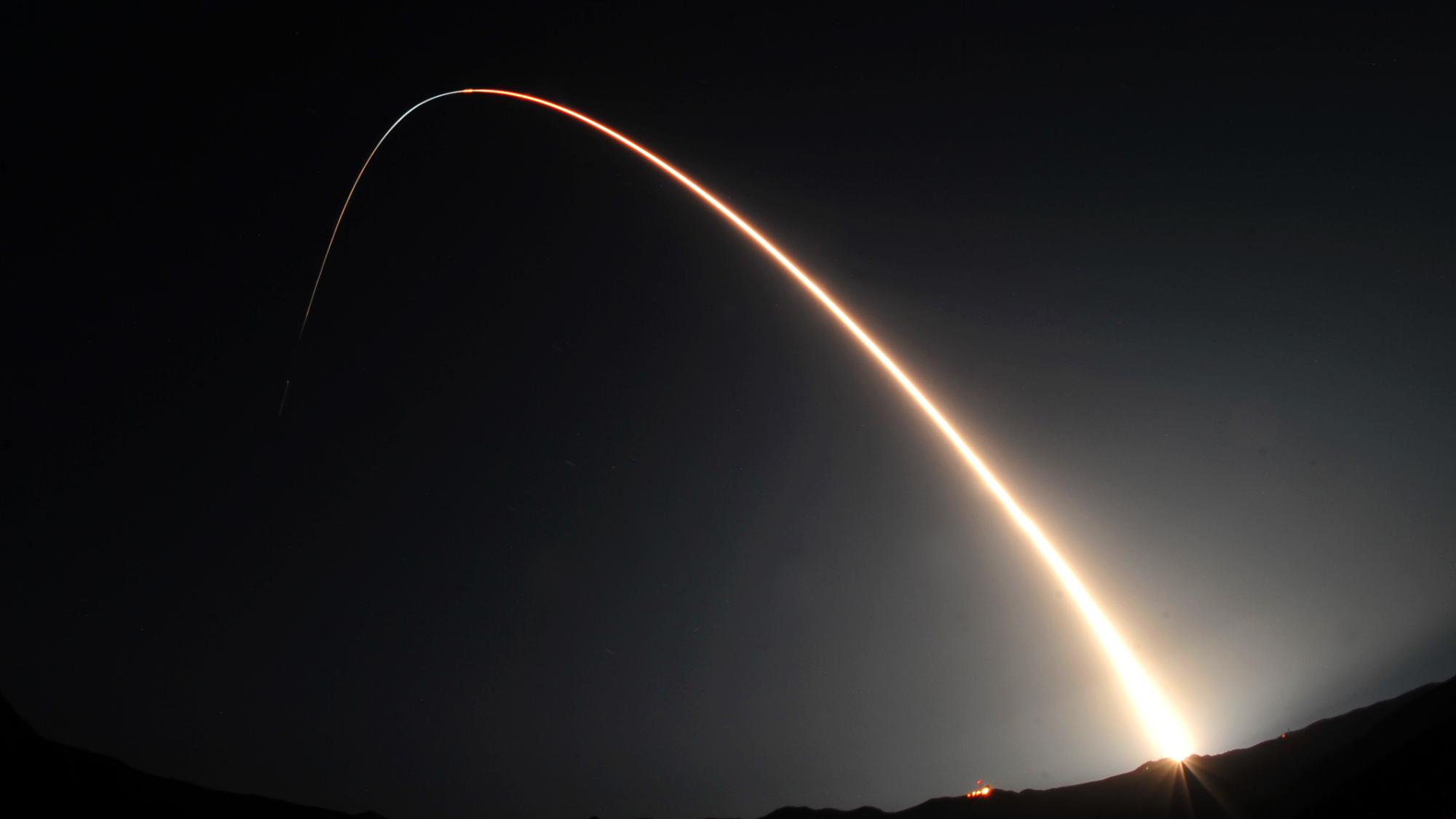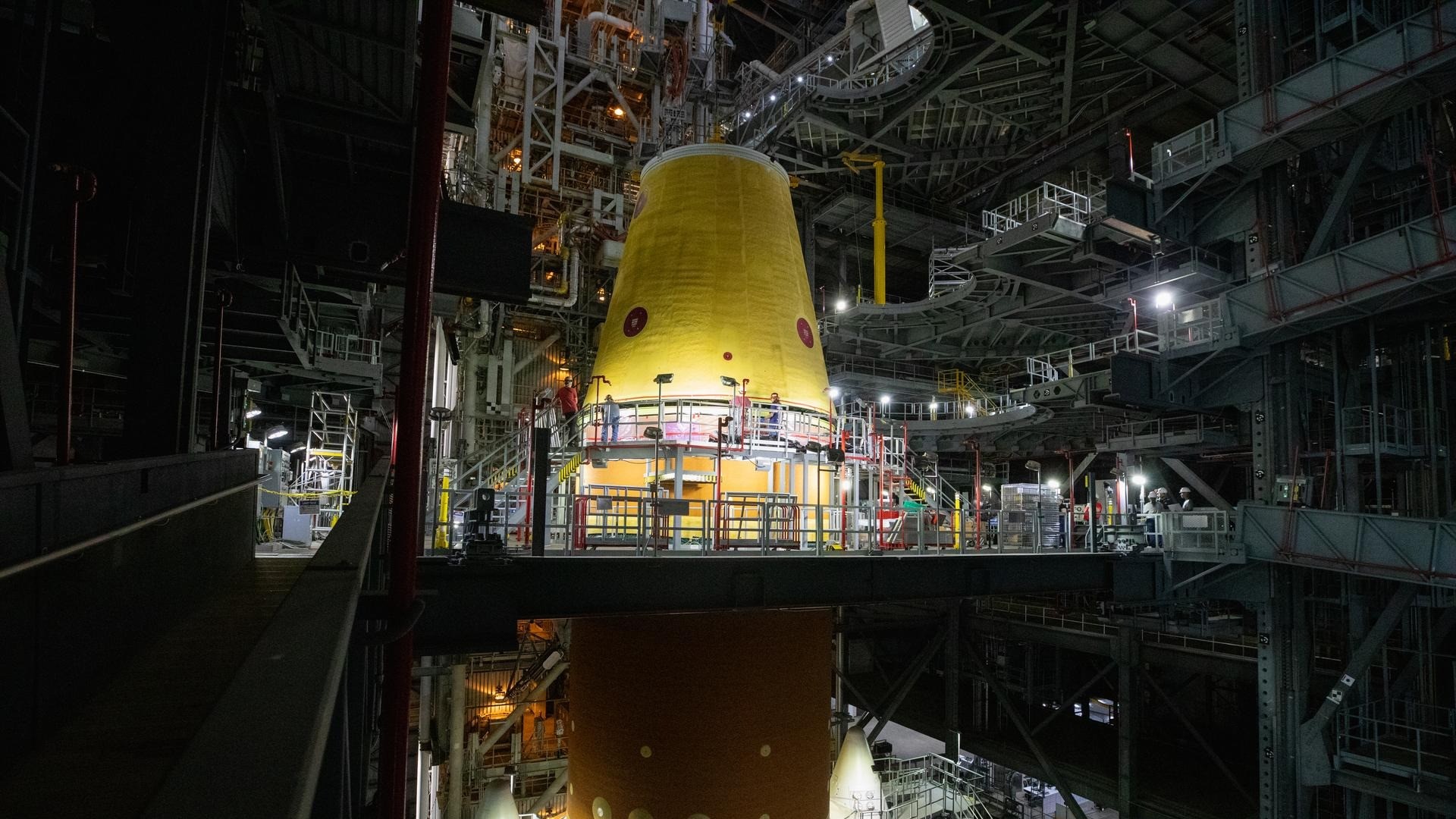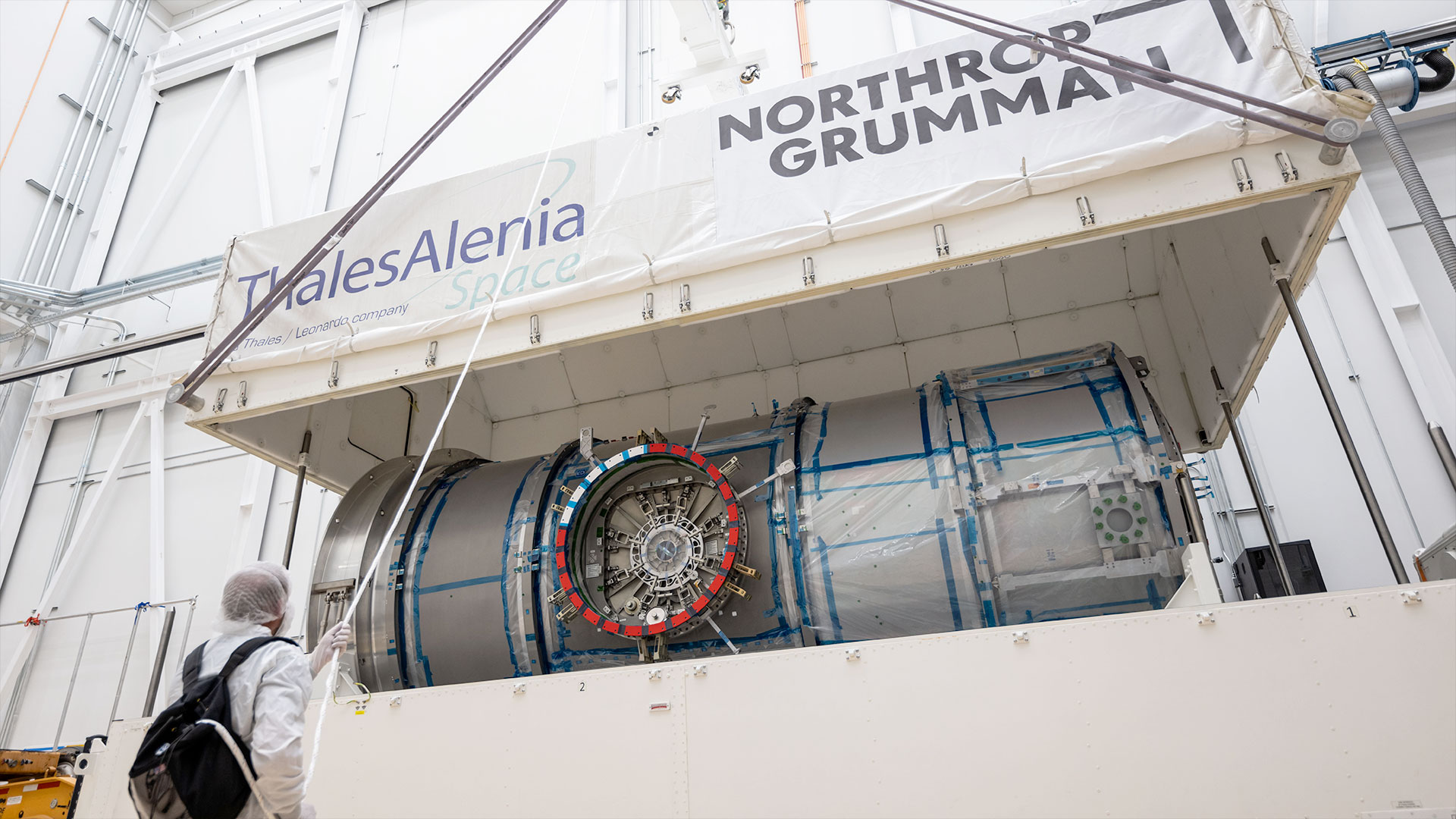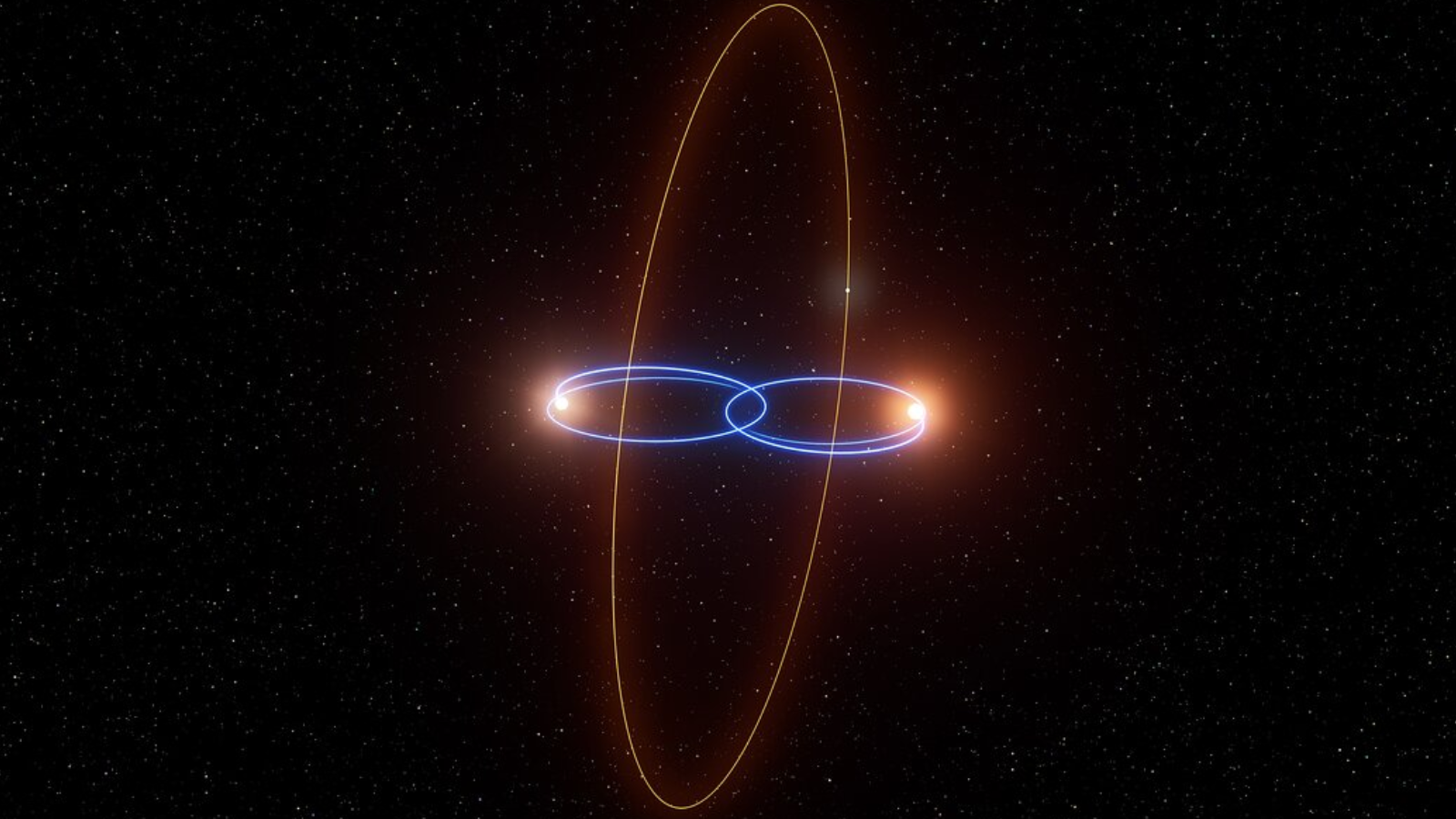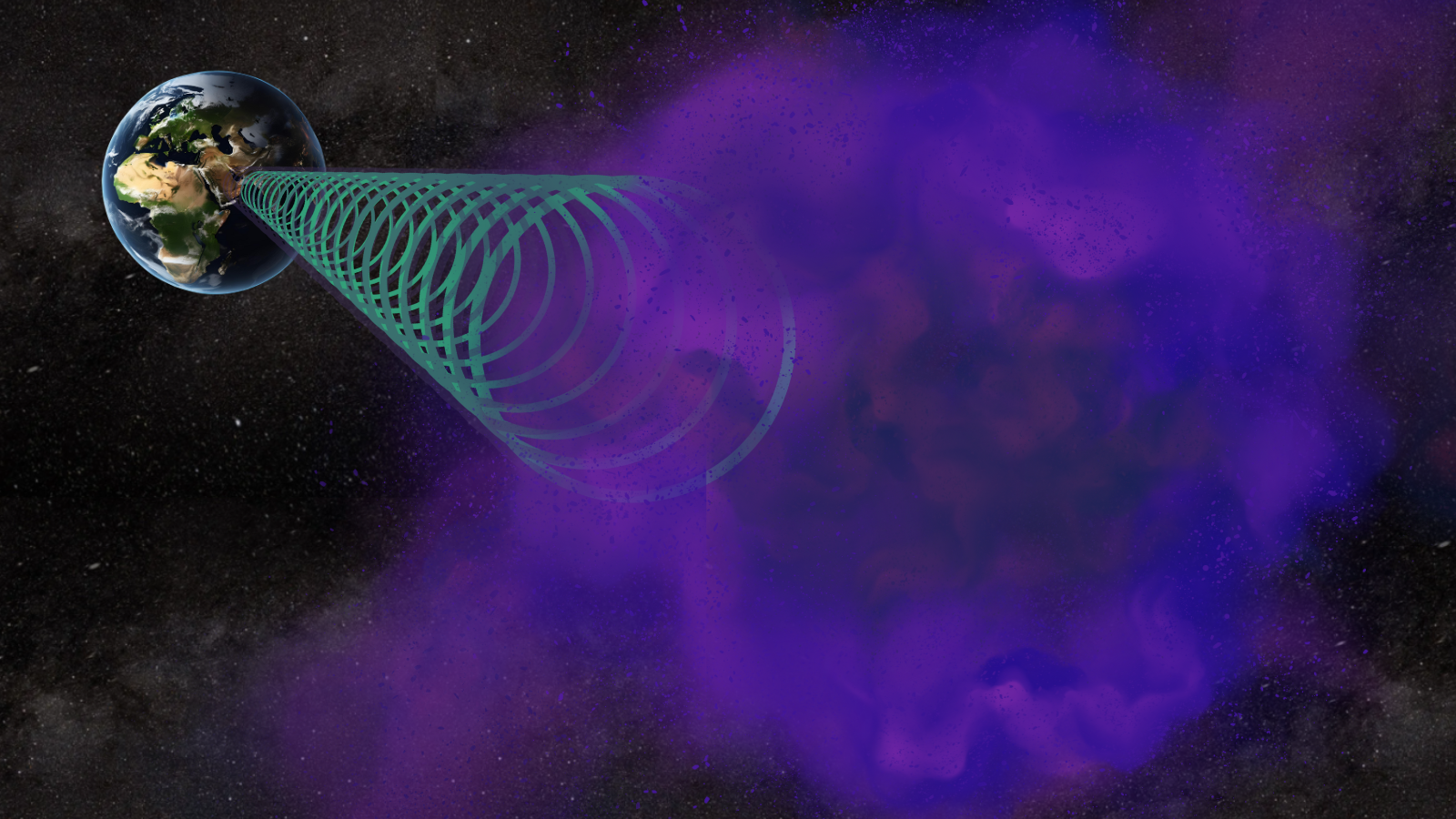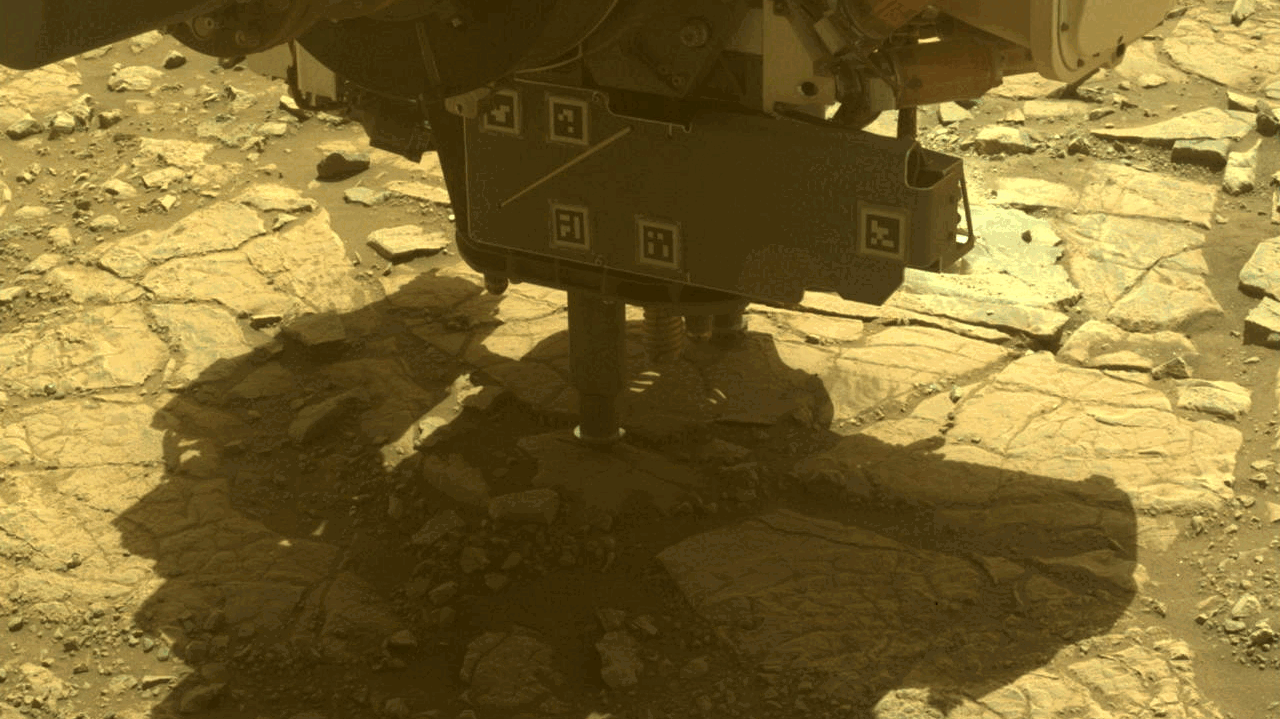SpaceX Barely Missed Catching a Rocket Nose Cone with Giant Net on a Boat
It was close but no cigar for Mr. Steven in its SpaceX debut.
The net-equipped boat came up a bit short in its quest to pluck a falling payload fairing — the protective nose cone that surrounds satellites during launch — out of the sky today (Feb. 22), SpaceX founder and CEO Elon Musk said.
"Missed by a few hundred meters, but fairing landed intact in water. Should be able catch it with slightly bigger chutes to slow down descent," Musk tweeted today.
The billionaire entrepreneur also posted a photo on Instagram showing half of the clamshell-like fairing bobbing in the Pacific Ocean.
"Falcon fairing half as seen from our catcher’s mitt in boat form, Mr. Steven. No apparent damage from re-entry and splashdown," Musk wrote in his Instagram post.
Mr. Steven did its thing this morning, shortly after a SpaceX Falcon 9 rocket lifted off from Vandenberg Air Force Base on the California coast. The booster successfully orbited the Paz radar-imaging satellite for Spanish company Hisdesat, along with two small prototype craft designed to pave the way for SpaceX's huge Starlink internet-satellite constellation.
The Falcon 9 featured a pre-flown first stage — part of SpaceX's cost-slashing effort to develop fully reusable launch systems. (The booster did not attempt a landing today, however.) Mr. Steven is part of this grand vision as well: Falcon 9 payload fairings cost about $6 million apiece, Musk has said, so there's a strong financial incentive to recover and reuse them.
Get the Space.com Newsletter
Breaking space news, the latest updates on rocket launches, skywatching events and more!
The 205-foot-long (62 meters) Mr. Steven is a speedster, capable of reaching nearly 37 mph (59 km/h, or 32 knots), according to SeaTran, the company that owns the boat. Its deck is 136 feet long by 27 feet wide (41 by 8 meters).
SpaceX has another launch scheduled Sunday (Feb. 25), but Mr. Steven won't be involved. That mission, which will orbit the Hispasat 30W-6 communications satellite, lifts off from Florida's Cape Canaveral Air Force Station, a continent away from the boat's current location.
Musk said on Twitter that Mr. Steven will next see action in "about a month."
Follow Mike Wall on Twitter @michaeldwall and Google+. Follow us @Spacedotcom, Facebook or Google+. Originally published on Space.com.
Join our Space Forums to keep talking space on the latest missions, night sky and more! And if you have a news tip, correction or comment, let us know at: community@space.com.

Michael Wall is a Senior Space Writer with Space.com and joined the team in 2010. He primarily covers exoplanets, spaceflight and military space, but has been known to dabble in the space art beat. His book about the search for alien life, "Out There," was published on Nov. 13, 2018. Before becoming a science writer, Michael worked as a herpetologist and wildlife biologist. He has a Ph.D. in evolutionary biology from the University of Sydney, Australia, a bachelor's degree from the University of Arizona, and a graduate certificate in science writing from the University of California, Santa Cruz. To find out what his latest project is, you can follow Michael on Twitter.

